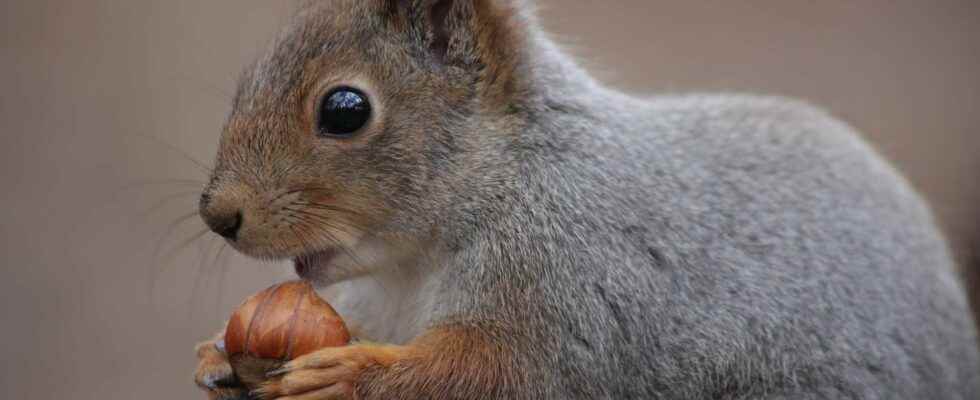Each fall, the squirrel piles up provisions in different hiding places to enjoy during the winter. To find these multiple locations, he adopts amazing mnemonic strategies.
You will also be interested
The squirrel shopping is the epitome of the cautious animal. A bank has even made it its mascot! Unlike marmots or hedgehogs, the squirrel does nothibernates not. It must therefore build up food reserves (seeds, acorns, mushroomssnails, insects and of course Hazelnut) to be able to eat all winter long. This type of behavior in animals comes in two strategies: on the one hand, those who pile up all their reserves in one place, and those, like the squirrel, who distribute them everywhere. ” Disseminating your provisions helps to minimize the risk of a major loss », explains Mikel Maria Delgado, researcher at the school veterinary from the University of California. In the event that a small competitor should come to discover the unique hiding place, there would be nothing left for the unfortunate squirrel.
Up to 3,000 hidden hazelnuts per season
But multiplying the hiding places implies remembering a large number of places. A squirrel can thus accumulate up to 3,000 hazelnuts in one season. However, he is able to remember not only the location of each hiding place, but also the date on which he buried his hazelnuts and the type of food it contains. Would he have developed a memory extraordinary ? It was long thought that he relied solely on his (excellent) smell to unearth its reserves. The animal would in fact be particularly good at locating its hiding places, even going so far as to take different paths to achieve this, according to a study published in 1991 in the journal Animal Behavior.
A mnemonic card
In an experiment conducted in 2017Mikel Maria Delgado and his colleague Lucia F. Jacobs thus show that the squirrel adopts a strategy called ” chunking » (which could be translated as « memorization by block ») to group or split up its hazelnuts according to precise criteria. He first piles up his food in one place, then distributes it in different caches according to the type of hazelnut, thus making it possible to build a “mental map”. According to another study, “high value” nuts are preferably hidden away from the food source so that they are not nicked by another squirrel. Pizza Ka Yee Chow, a researcher at Hokkaido University in Japan, explains that squirrels also use visual cues, including distance from trees or between hiding places. It is even capable of “fooling” its fellow creatures by pretending to rummage through the leaves to make it look like there is a hiding place.
Even with these sophisticated strategies, the squirrel does not find never all of its hiding places. By forgetting his provisions, he thus involuntarily promotes the dissemination of seeds in the forest.
Interested in what you just read?
